Photo essay for the Special Initiative “The Mekong is Blue and Dried: Visual Storytelling of the Mekong River’s Environmental Degradation” by SEA Junction and the Samdhana Institute
| Title: | Safeguarding the Mekong River for Future Generations |
| Storyteller/Photographer: | Kumpin Aksorn |
| Place: | Ubon Ratchathani Province and Loie Province, Thailand |
| Time: | 2012 – 2020 |
I am from Sisaket Province in northeastern Thailand. While doing a research on Lao migrants for Ubon Ratchathani University after graduation, I did field work in Tamui village, Khong Chiam District, Ubon Ratchathani Province and interacted with the villagers alongside the Mekong River such as in Khemmarat District and Pho Sai District.
I soon learned that Tamui villagers were experiencing various challenges. In addition to citizenship issue, the national park’s areas overlap with the villagers’ arable areas. Moreover, there was a proposal in 2005 to build the Ban Kum dam on the Mekong River, close to Tamui village, which would destroy the villagers’ livelihood relying on natural resources.
After studying the issues at stakes and various discussions, the villagers living along the Mekong river together with activists working to protect the Mekong River agreed to form a network called “Rak Mekong Community” or “Mekong Community Lovers” in order to solve the problems together. The group was first established in Chiang Khong District, Chiang Rai Province. In 2009, Tamui villagers visited Chiang Khong to observe its operation and returned back to review the lessons learned. For many years, there were protest against the Ban Kum dam project and its potential impacts on diverse ecosystems on both Thailand and Laos sides. As a result, in 2008 the senators and members of parliament visited the concerned locations and helped in policy advocacy until the dam project was suspended indefinitely.
The photos in this essays span from 2012 to 2019 and expose the richness of the Mekong River and the ongoing changes of the river’s ecosystem, which is caused among others by several dam constructions in China and Laos.
The clearest example of the Mekong River’s ecosystem degradation in Ubon Ratchathani Province is the destruction of “Na Saeng” or rice plantation on the Mekong riverside, which was specifically recognized as a unique sub-ecosystem of the Mekong River. The water would decrease and the area becomes like a small shallow pond (Bung in local language) providing arable land. But with the water fluctuation and drought, Na Saeng no longer exists. There can no longer be rice cultivation and the inhabiting space for aquatic animals and fishes that the villagers depend on is also destroyed.
The changes in the river have reduced fish diversity and the amount of fish catch has been declining. “Bung” and alluvial soils also fluctuate. There are only sands flowing in, not much of slit loam as it used to be in the past. Also, when Xayaburi dam retained water for an electricity generation test in July 2019, the river water turned crystal-clear so the fish didn’t come around and villagers couldn’t catch it.
Despite the postponement of the Ban Kum dam project, surveys are still made to assess opportunities for such project in Laos. We fear that it may be proposed again during our or the next generation. For this reason, it is crucial to invest in the youths so that they are able to advocate for policies that protect their future and that of the river. There should no longer be dams built on the Mekong River in Thailand or in neighboring countries. Though it is difficult, we must conserve the Mekong’s ecosystems for us and the next generations.
Photographer/Storyteller
Kampin Aksorn is an environmental and human rights activist for over 10 years. She works in the issues related to livelihoods improvement, locals and culture, stateless Lao immigrants in Thailand, and environmental protection of the Mekong River.
Organizers
The Mekong is Blue and Dried: Visual Storytelling of the Mekong River’s Environmental Degradation is a special initiative of SEA Junction and its partner the Samdhana Institute to provide a platform for the creative use of visual documentation and art to advocate for environmentally and socially friendly measures for the Mekong River.
SEA Junction
SEA Junction, established under the Thai non-profit organization Foundation for Southeast Asia Studies (ForSEA), aims to foster understanding and appreciation of Southeast Asia in all its socio-cultural dimensions, from arts and lifestyles to economy and development. Conveniently located at Room 408 of the Bangkok Arts and Culture Center or BACC (across MBK, BTS National Stadium), SEA Junction facilitates public access to knowledge resources and exchanges among students, practitioners and Southeast Asia lovers. For more information see www.seajunction.org, join the Facebook group: http://www.facebook.com/groups/1693058870976440/ and follow us on twitter and Instagram @seajunction
The Samdhana Institute
Samdhana, in Sanskrit, means healing, uniting, peacemaking. It was formed in 2003 by a group of individuals, conservationists, development practitioners, constituting the first Samdhana Fellows; moved by the same commitment of ‘giving back’ what they know to the next generation; and bringing together skills, knowledge, experiences, networks, colleagues and friends; delivering maturity, strength and sustainability. For more info see www.samdhana.org.
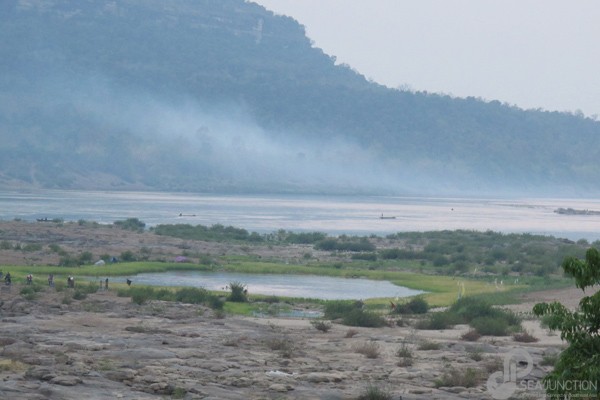
“Na Saeng” or rice plantation in lower area along the Mekong riverside emerge when the water decreases and the area become like a small pond. Bung Pad, Ubon Ratchathani Province, 2012. (Photo by Kumpin Aksorn)
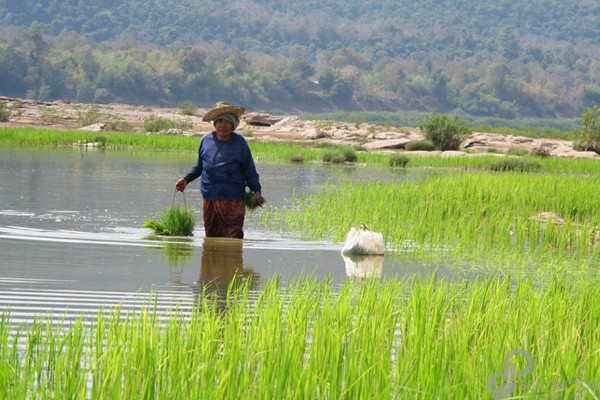
Local rice species that is resistance to floods in Bung Pad, Ubon Ratchathani Province, 2012. (Photo by Kumpin Aksorn)
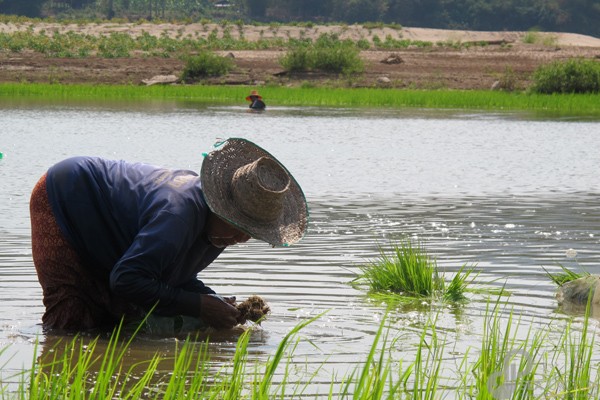
Grandma Wan Panyasu, 84-year-old is the last generation to plant rice in “Na Saeng”, Ubon Ratchathani Province, 2012. (Photo by Kumpin Aksorn)
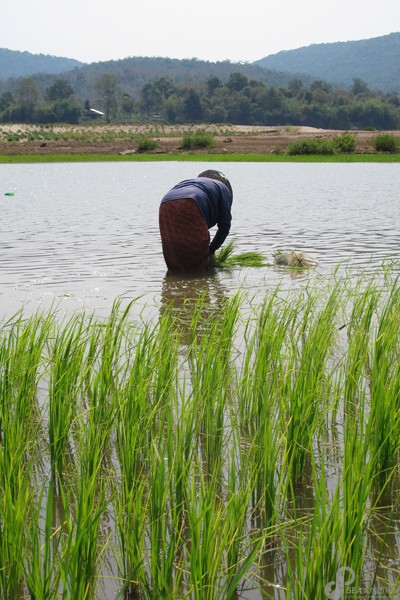
“Na Saeng” along the Mekong riverside, 2012. (Photo by Kumpin Aksorn)
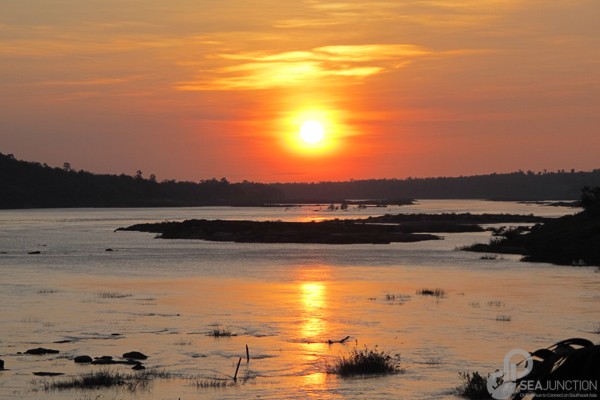
“Light of hope for the Mekong fisherman”. Sunset on the Mekong River in Tamui village, Ubon Ratchathani Province, 2013. (Photo by Kumpin Aksorn)
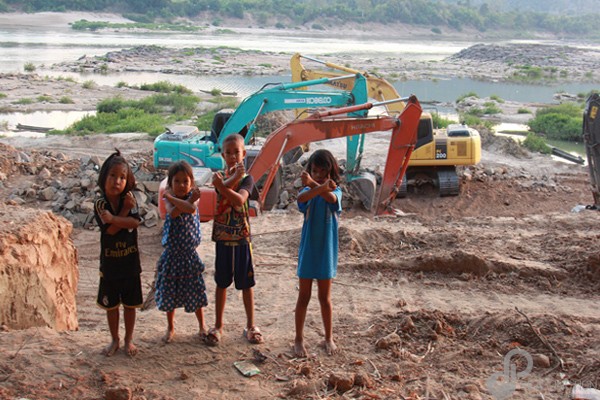
Kids posted a sign of protest construction of embankment along the Mekong River where local people use the land for gardening, Tamui village, Ubon Ratchathani Province, 2013. (Photo by Kumpin Aksorn)
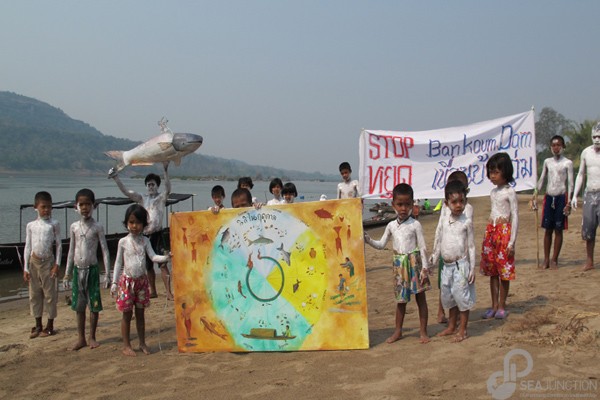
Kids involved in the protest against Ban Kum dam in Tamui village, Ubon Ratchathani Province, 2013. (Photo by Kumpin Aksorn)
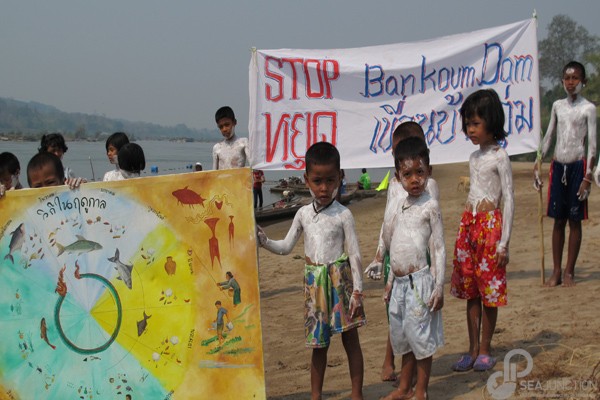
The painting illustrates life cycle of migratory fish in the Mekong River and local livelihoods. (Photo by Kumpin Aksorn)
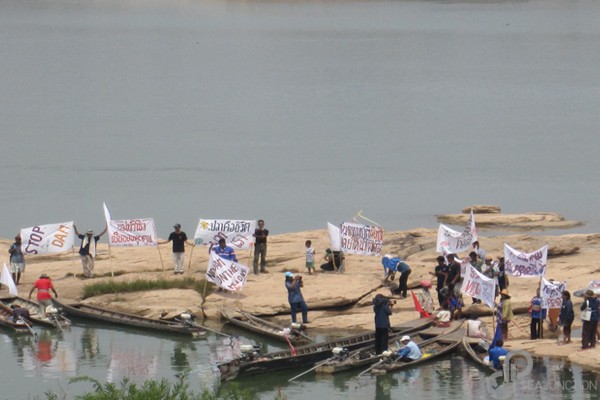
Protest against the dam on the Mekong in Tamui village, Ubon Ratchathani Province, 2013. (Photo by Kumpin Aksorn)
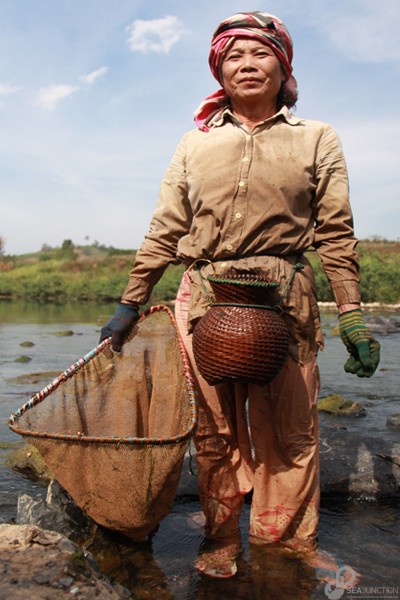
Local livelihoods in Loei River which is a tributary of the Mekong mainstream. This area is a proposed site for Khong Loei-Chi-Mun water diversion project, Loei Province, 2014. (Photo by Kumpin Aksorn)
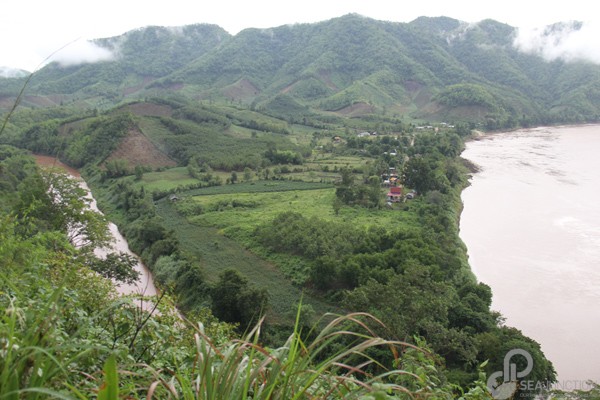
Huang Sob Khong village along the Mekong River in rainy season that full of water, Loei Province, May 2016. (Photo by Kumpin Aksorn)
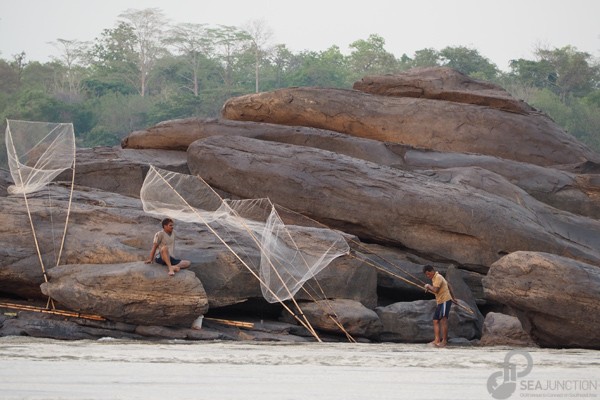
Two fishermen using local fishing gear to catch fish in the Mekong River in Pho Sai District, 2016. (Photo by Thanaporn Srisuksai)
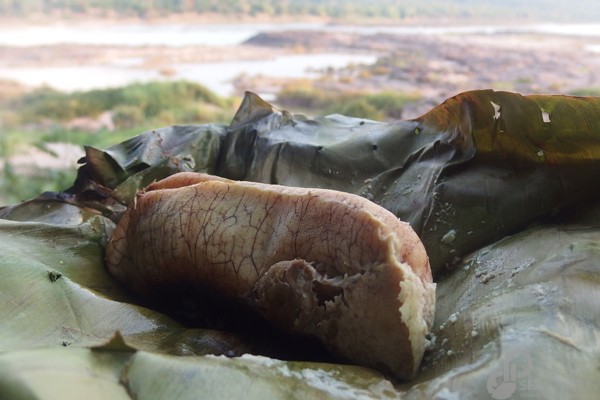
“Never want to swap it with anything”. Mekong fish eggs mixed with salt and steamed menu, Tamui village, Ubon Ratchathani Province 2014. (Photo by Kumpin Aksorn)
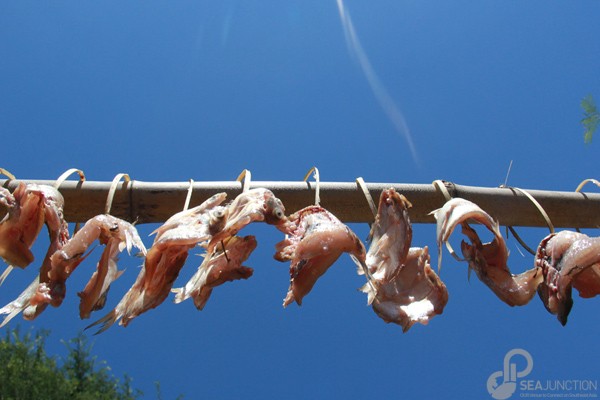
Fish sun-drying to preserve it in Tamui village, Ubon Ratchathani Province, 2017. (Photo by Kumpin Aksorn)
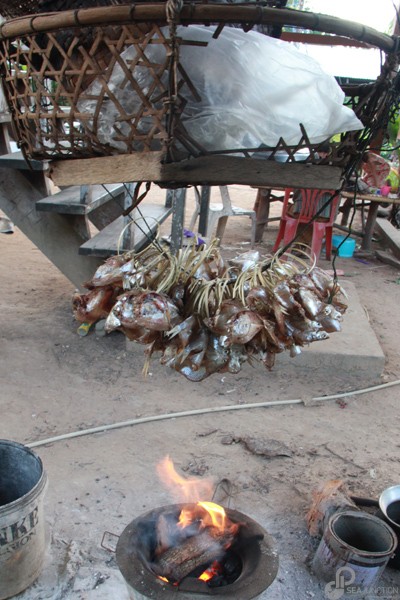
Smoking fish in Tamui village, Ubon Ratchathani Province 2020. (Photo by Kumpin Aksorn)

Children from Youth Along the Mekong River group from Tamui village, Ubon Ratchathani province surveying agriculture area on the Mekong riverbank when the water level decreased, 2019. (Photo by Kumpin Aksorn)
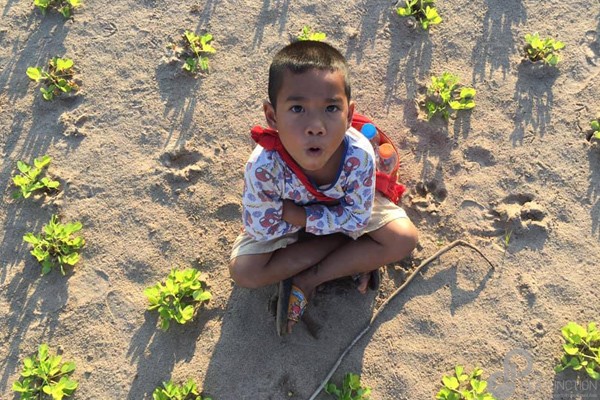
A boy from Tamui village, Ubon Ratchthani Province sitting among vegetable garden on the Mekong riverbank, 2019. (Photo by Kumpin Aksorn)
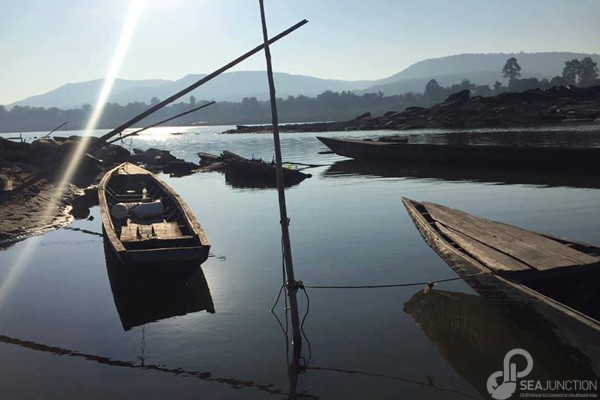
Fishing boats docking along the Mekong River that became clear without sediment at Tamui village, Ubon Ratchthani Province, 2019. (Photo by Kumpin Aksorn)


